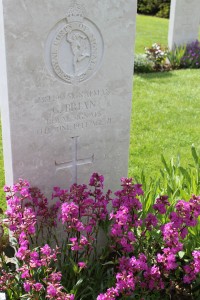[I could not get photos to upload so I will add them later]
Of all of the places we visited on this whirlwind study tour, my favorite by far is Berlin. The city itself is exciting—gritty yet beautiful, historical yet in construction new. It seems that Berlin has changed just in the short time that I’ve walked the streets because countless construction cranes scream development, which is good for Berlin’s economy but not so good for it’s street culture. Berlin rolls many of my favorite things into a vibrant and vexing urban space. Hundreds of years of history, food from around the world along with delicious German dishes, dynamic public spaces with old monuments alongside truly magnificent urban art. I think I enjoy this city so much because of this mismatched nature. I could wander here for years and still find perplexing pieces of street art or commemorative plaques every day.
In World War II terms, this city is oozing history. Since Berlin endured such heavy bombing near the end of the war, many parts of the city (at least the ones I had a chance to explore) are new. But the Germans, more than any other country I’ve been to (including the United States), have engrained history into their everyday life. WWII as well as other historical events are commemorated and memorialized almost everywhere. Seeing this city for myself lends so much more meaning to the WWII knowledge I learned in the classroom. Visiting the Reichstag allows me to understand how terrifying the Reichstag fire of 1933 would have been to Germans and it starts to make sense that the Nazis used the event so strategically. Standing in the shadow of this enormous and democratically symbolic building made the history so much more real than any book or photograph has.
Each WWII site that we visited in and around Berlin spoke to me in a different way but all were powerful. The war started and ended here, not in London or Paris. The Nazis orchestrated their reign of terror from here. It is hard to fathom those facts in the middle of a modern city. But those historical places still exist. Sachsenhausen Concentration Camp, where the Nazis murdered thousands of people, is still standing less than an hour outside of the city center. Our visit there was indescribable and I am certainly not going to attempt to discuss it here. The Topography of Terror Museum stands on the grounds of the old Gestapo (Secret Police) headquarters, where countless crimes against humanity were committed and coordinated. German museums held very little back and were the most comprehensive of most visited on this trip.
I spent a lot of time thinking about how Germany remembers the war. Last Friday evening I visited three memorials: Memorial to the Murdered Jews of Europe and the memorials to the Roma and Sinti and Homosexuals (I hate that terminology but it is what it is) murdered by the National Socialist regime. I could write and write about all of the sites, but there were several things that I noticed. First, the size of the memorial pretty much corresponded to the amount of people that were killed by the Nazi regime. This may seem like a very obvious observation, but the more I thought about it, the more interesting it was. The Jewish memorial is situated across the street from the United States Embassy within view of the Brandenburg Gate and takes up almost two blocks of space. The 270 stones stand in stark contrast to the area around them. The Jewish memorial is incredibly visible and incredibly well marked, while the homosexual’s memorial is hidden in trees with no signage around it. If I hadn’t looking for it, I would not have found it. The memorial itself is a large block of gray stone with a small hole in it that loops a short film of a gay couple kissing. Since homosexual victims of the Nazis were less visible than other groups, it makes sense that this memorial would try to make the viewer try to engage up close to the subject matter, but the way that this memorial is so tucked away could make it even easier for people to forget that homosexual people were targeted by the Nazis. This is important today because the LGBTQ population still does not have enough representation or rights around the world. I’m not saying that a good memorial needs to be Statue of Liberty size to be meaningful, but some signage would be nice. The Roma Sinti memorial was interesting because of its proximity to the Reichstag/Bundestag. I could see the quotes written on the memorial while standing in the Reichstag yard. Since there is still so much discrimination of Roma and Sinti people in Europe today, the visibility to lawmakers could have been on purpose.
It’s hard to believe this trip is almost over. I am coming out of this month a better world citizen with immersive historical experiences under my belt and a new group of friends that I am able to discuss many historical questions with. The trip was definitely an adventure with some trip ups, but it was the experience of a lifetime.





